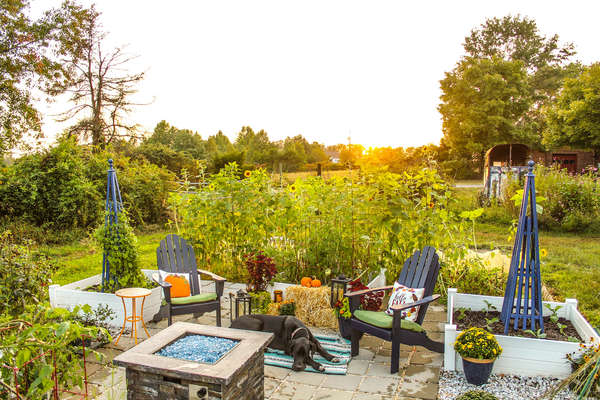Performing the landscaping yourself can be an enjoyable and relaxing project. It also allows you to have help from friends or family who are knowledgeable about landscaping and gardening. However, if you have a deadline to meet or you are unsure of how to proceed, you might want to hire a landscaper instead. Also, consider landscaping in stages so you can enjoy the process as much as possible.
Landscape design
When it comes to landscaping, a professional landscaper can provide many benefits. These benefits include planning and understanding HOA and zoning requirements. They can also help you avoid making your yard look cluttered. They can also recommend plant species that fit into the space you have. In addition, professionals have experience in designing landscapes that incorporate seasonal interests and layers of colour. They know when certain plants will bloom and can use these to their advantage.
Whether you plan on installing a custom garden or simply enhancing an existing landscape, a professional can help you get the most out of your investment. They can also install irrigation systems that will make sure your plants get the right amount of water. They can even recommend landscape lighting options that will highlight the beauty of your property after dark. They bring their own expertise and creativity to the table, which you won’t find with a DIY project.
If you have a tree or shrub that requires special tools, you might want to call a landscape architect or a tree specialist. A landscape architect can also recommend the best fertilizer for your trees and know how to apply it properly. Additionally, they can recommend ways to keep the roots moist. You can set up an ongoing tree service agreement with a landscaper if you’d like. But remember that trees can be dangerous to animals, so you should protect them with tree guards. Using chicken wire or bark cloth can help, as well as covering the trunk of a young tree with burlap.
Plant selection
If you’re considering DIY landscaping, there are several things to keep in mind before starting a project. First, you should consider the size and shape of your space. This will help you determine which types of plants to use. Also, be sure to consider the growth potential of the plants you choose.
Another thing to keep in mind is the management and maintenance requirements of your plants. The management and care of your plants will determine how long they will retain their beauty. Moreover, you should also consider their ability to adapt to your site’s requirements. Plants must be chosen with care to make sure they are easy to maintain and contribute to the overall appeal of your landscape. Moreover, you need to consider a variety of horticultural practices, such as pruning, fertilization, irrigation, and pest management, to ensure the health and longevity of your plants.
Besides knowing the requirements of your plants, you should also know how to install them. Many plants need specific soil conditions, while others are best grown in the shade. Others require special drainage. All of these factors make DIY planting a tricky endeavour. If you’re unsure of how to properly install your plants, call a professional.
Budgeting for landscaping
Budgeting for landscaping is the process of determining the overall cost of your landscape project. You should include costs for all of the essential features of your landscaping project, including the ones that add the most value to your property. These might include an outdoor patio with comfortable seating, a water feature, or a rustic fire pit area. In addition to the major features, you should account for additional costs, such as the cost of labour.
If you are planning on hiring landscapers, consider their level of training. A team that has undergone proper training can really make a difference in the final result of your project. It is also important to budget for material costs. Materials are the largest factor that can quickly push up your costs. By comparing various options, you can choose the most budget-friendly option. However, material costs are only one component of the overall project cost, so it is important to keep in mind the availability of materials.
Another factor that impacts your landscaping budget is inflation. Prices for many goods and services increase each year. Landscaping materials, fuel, equipment, and people are more expensive than they were even a year ago. You should plan accordingly and factor in inflation as you go.
Irrigation
Most people assume they can do their landscaping projects on their own. However, there are a number of important factors to consider before you get started. For example, you may not know what type of plants and trees are best suited for your climate or your level of maintenance. For this reason, you might need to hire a landscaping professional to help you out.
While it can be fun to take on a landscaping project yourself, it’s best to consult with a professional if you don’t have the right skills. You can also ask a knowledgeable friend or family member for help if you need it. If you’re working under a tight deadline, calling a landscaping professional may be a more practical option. You can also consider landscaping in stages.
DIY landscaping can save you money, but it also takes time. A landscaping contractor can help you install irrigation systems, so your plants receive the proper amount of water. Additionally, a landscaper can suggest lighting options for your property that will showcase its beauty after dark. Additionally, a landscaping contractor has the necessary industry experience and can come up with innovative ideas that might not be feasible for you to achieve on your own.
Lighting
There are times when you can handle landscaping projects on your own, but other times you need to enlist the help of a professional. If you have the time and the know-how, DIY landscaping can be a rewarding and relaxing experience. You can use magazines, books, blogs, and even your neighbours’ yards to get inspiration. However, there are some rules that you need to follow. For example, trees should be planted at least 30 feet away from concrete.
Perennial flowers
Despite the many benefits of DIY landscaping, some tasks are best left to a professional. A landscape designer can help you select plants and plan to plant beds that won’t look cluttered or overgrown. In addition, they can recommend alternatives for plants that may be too small or too large for a specific area. A landscape designer can also help you create layers of colour and interest by choosing a wide variety of flower species that can bloom throughout the year.
When planning your landscaping, consider how you can maximize its value over time. For instance, do you want the flower beds to look beautiful in spring and summer, or do you want them to look beautiful in autumn? The key is to find a mix that will suit the climate in which you live. Also, don’t forget to add fresh mulch to flower beds to add curb appeal and protection to your flowers.
Before hiring a landscaper, consider how much time you’re willing to spend on landscaping. It may not take much time to complete a simple job – like mowing or pruning lawns. However, if you have a complex yard that requires planting a tree or shrub, it’s best to leave it to a professional. For small landscaping projects, DIY can be an excellent option. However, if you are unsure about your own skills, you can always consult an expert for advice.
Deciduous trees
There are some things to keep in mind when you’re landscaping your yard. Although you may feel like you can tackle the project without professional help, if you’re unsure of your abilities, hiring a professional can save you money and time. When planning a landscape, keep in mind that you don’t want to overextend yourself and risk damaging your property. Consider taking on small projects first and adding more to them over time.
When DIYing your landscaping, you can tackle tasks like planting trees and improving soil quality. However, if you need to excavate, it’s better to call a pro. Digging up a tree or stump can damage pipes, sprinkler systems, or even the home’s foundation. Also, you should seek professional assistance if you don’t have the proper training and equipment.
Thanks for the reading – and thank you to our guest Billy from Garden Landscaping Geelong who helped with some information on this one!
Check him out here – landscapegeelong.com.au

